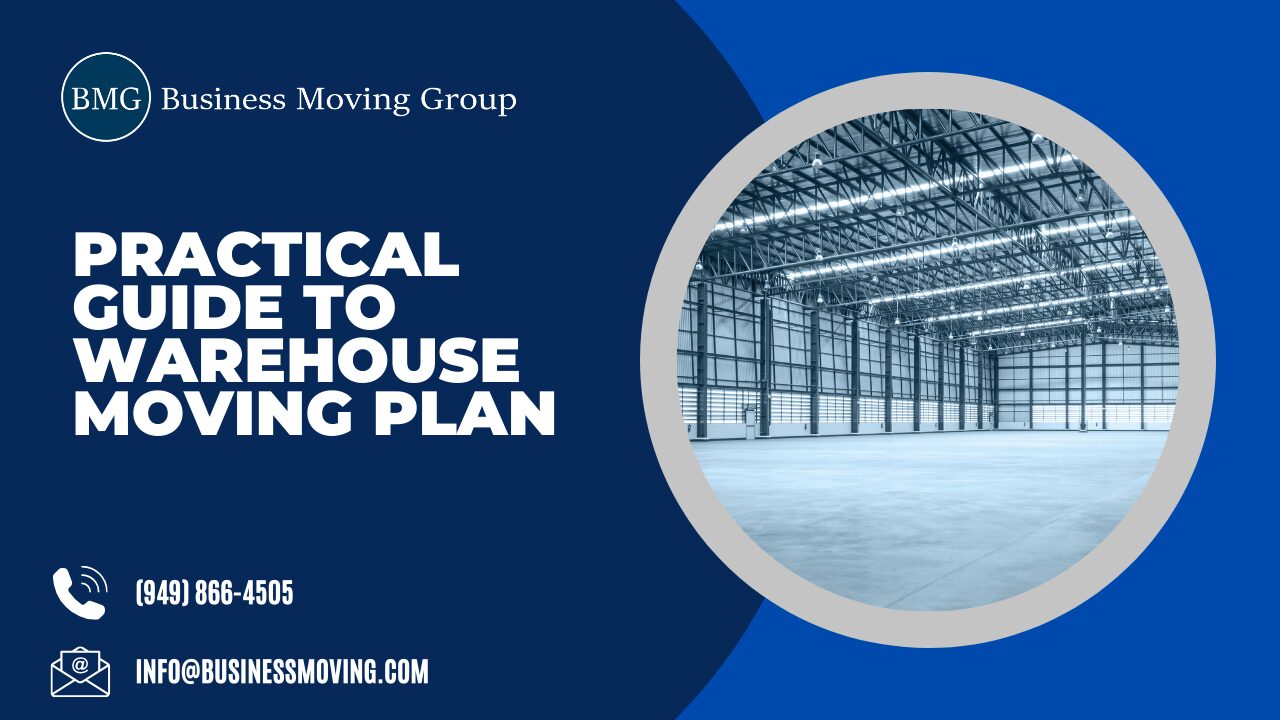Relocating a warehouse is a complex process that can impact every part of your supply chain—from inventory accuracy to customer service levels. At Business Moving Group, we’ve helped hundreds of companies manage seamless transitions by starting with one thing: a detailed warehouse move plan.
Here’s what to include in your move strategy—well before your target go-live date.
🚧 Common Issues in New Warehouse Launches
Without a strong plan, even well-funded warehouse moves encounter costly setbacks. The most frequent challenges include:
-
Insufficient planning and underestimating timelines
-
Permitting and construction delays
-
Inaccurate inventory counts before or after the move
-
Delays in installing and testing WMS, conveyors, and automation
-
Not enough labor to maintain operations during the transition
According to Logistics Management, up to 60% of warehouse transitions face delays due to permitting or technology-related issues.
📋 Steps for Building a Smart Warehouse Move Plan
1. Project Management
Opening a new warehouse typically requires 3–6 months from lease signing to full operations. If you’re adding a new Warehouse Management System (WMS) or automation, allow an additional 3–6 months for integration and testing.
✅ Assign a project manager
✅ Establish weekly status updates and milestones
✅ Align IT, operations, HR, and vendors from the start
2. Warehouse Space Planning
Your new layout should reflect:
-
Department needs (receiving, staging, packing, etc.)
-
Efficient product flow and traffic patterns
-
Peak volume flexibility
-
Proper aisle widths, rack types, and automation pathways
Tip: Use CAD layouts or 3D models to visualize workflows.
3. Labor and Staffing Plan
Keep operations moving during the transition by planning:
-
Staff roles at both locations
-
Overtime requirements
-
Temporary labor and cross-training
-
Facility cleanup and equipment teardown
Don’t underestimate how labor-intensive even short-distance moves can be.
4. Permitting and Local Compliance
Verify local regulations early:
-
Fire safety
-
Electrical permits for automation
-
Racking anchoring requirements
-
Loading dock inspections
Start the permitting process as soon as your layout is finalized to avoid delays.
5. Inventory Preparation
A clean inventory move is essential. Before relocation:
-
Liquidate obsolete or dead stock
-
Perform a physical inventory audit at the SKU level
-
Shrink-wrap and label all pallets for location tracking
This ensures fast slotting and avoids system discrepancies.
6. Reroute Deliveries and Returns
Avoid fulfillment gaps by updating:
-
Vendor shipping and billing info
-
Purchase orders
-
EDI systems and return addresses
-
Labels in transportation management systems
Notify partners of the move 2–4 weeks in advance.
7. Racking and Material Handling Equipment
Decide whether to move or purchase new systems. Evaluate:
-
Cost of uninstalling and reinstalling racking
-
Downtime required for setup
-
Compatibility with your new floor plan
-
Need for short-term forklift or conveyor rentals
8. Transportation & Logistics
Plan the flow of inventory into the new building:
-
How many trailers or box trucks are needed?
-
Will you move in phases?
-
Have you secured transportation contracts?
Bundle logistics with your moving vendor whenever possible to simplify coordination.
9. WMS and Technology Installation
Tech delays often derail warehouse openings. Allow time for:
-
Internet setup and network configuration
-
WMS or ERP installation
-
Barcode printer and scanner testing
-
Conveyor and automation calibration
Plan a soft go-live date for testing and adjustment.
10. Employee Communication
Your employees can make or break your move. Ensure:
-
Role clarity for each department
-
Weekly updates during the project
-
Access to new facility maps and SOPs
-
Q&A sessions to reduce confusion and frustration
🧠 Key Questions to Ask Before the Move
-
What operational benefit does this move provide?
-
Will the new facility support our growth for the next 3–5 years?
-
Who needs to be notified internally and externally?
-
Do we keep or replace our current racking and equipment?
-
Are our vendors, carriers, and WMS systems aligned with the new address?
✅ Warehouse Move Planning Checklist
Before moving day, make sure you’ve:
-
Conducted a full inventory audit
-
Confirmed building permits and code compliance
-
Finalized the new layout and racking plan
-
Scheduled equipment teardown and installation
-
Communicated with vendors and staff
-
Aligned transportation and move phases
-
Installed and tested WMS or automation
-
Held staff walkthroughs and team training
Final Thoughts
A successful warehouse relocation comes down to planning, communication, and execution. The earlier you begin—especially with layout design, inventory prep, and vendor coordination—the smoother the outcome.
If you’re considering a relocation, let Business Moving Group handle the heavy lifting—literally and logistically.
Ready to Simplify Your Business Move?
Contact Business Moving Group today for a free consultation!
Visit us at Business Moving Group for helpful resources and to learn more about our services.

